Sardines are the Safest Fish on the Planet

Holy cow! I mean fish! Due to the high mercury levels in most fish, the savvy Modern Paleo dieter should pass on mercury-toxic larger fish and eat low mercury sardines! Hands down, sardines are the safest fish on the planet.
With growing concern over the health of the seas, people are turning to sardines for the essential nutrients found in fish. Sardines are at the bottom of the aquatic food chain, feeding solely on plankton. As a result, they do not concentrate as much heavy metals like mercury and other contaminants found in most fish. Why not? They don’t live long enough to accumulate too much mercury. They live as long as 14 years of age, but about 90 percent of the population is under 6 years old.
Labeling laws are not standardized in America and many other regions regarding small canned fish. More than 20 varieties of fish are sold as sardines around the world, including herring (Americas), pilcards (Mediterranean), brisling (Norway), sprat (New Zealand, Australia, Europe) and Iwashi (Japan). Sardines are abundant in the seas of the Atlantic, Pacific and Mediterranean with Spain, Portugal, France, and Norway being the leading producers of canned sardines.
Sardines are also one of the most sustainable fish around. The Monterey Bay Aquarium’s Seafood Watch program lists sardines as a “Best Choice” due to their abundance and high production rate. Sardines are all wild. They are not farmed, as the life cycle of the sardine does not lend itself to farming. Maybe in years to come some scientist may crack the sardine code, but not yet. Sardines are also sustainably fished and do not put pressure on the planet’s fisheries.
I recommend people eat 3-4 cans of sardines a week. I much prefer eating fish than supplementing fish oil. I am not the biggest fan of the purified fish oils most people supplement (purified fish oil is less absorbable). Eating small fish like sardines is the way to go to meet one’s omega-3 needs.
Do Sardines Make You Gag?
Not to fear! You just ate some nasty sardines. There are good quality and bad quality sardines, just like any other food. You may want to give sardines another chance with a better brand.
Some of the poor quality brands (which does not always translate into the cheapest brand), taste extra fishy and even have an off, bitter taste to me. The higher quality brands taste like tuna and do not have that fishy taste. I mean, they taste like fish, but don’t taste fishy. See a list of brands I like below.
Why Eat Sardines?
Sardines pack a nutritional punch! A typical serving (one can) of sardines packed in olive oil contains around 14 grams of protein, 168 calories and 14.4 grams of fat, with 2.4 grams of the fat being saturated. Most of the fat content in sardines stems from polyunsaturated and monounsaturated fats, which may help to lower cholesterol levels and prevent heart disease. Here are a few more reasons to chow on sardines:
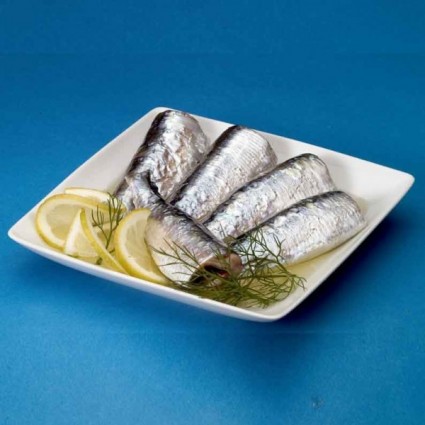 Omega-3. Many people today are deficient in omega-3, an essential fatty acid we must consume in the diet. Sardines are one of the most concentrated sources of the omega-3 fatty acids EPA and DHA. One can of sardines actually contains 1.5 grams of Omega-3.
Omega-3. Many people today are deficient in omega-3, an essential fatty acid we must consume in the diet. Sardines are one of the most concentrated sources of the omega-3 fatty acids EPA and DHA. One can of sardines actually contains 1.5 grams of Omega-3. - Calcium. The bones in sardines are rich in calcium. One can contains 350 mg of relaxing calcium.
- Selenium. The silvery skin of sardines is rich in selenium. Most people are deficient in this vital mineral needed to make thyroid hormones.
- Phosphorus. This mineral is important to strengthen the bone matrix that holds the bone’s minerals.
- B12. Sardines have one of the highest concentrations of B12 of any food, enjoying over 8 mcg in a single can.
- Vitamin D. Sardines contain about 175 IU of vitamin D. Not bad, but not nearly close enough to my recommended 5000 IU a day.
- Iodine. A can of sardines contains 35 micrograms of iodine, but read the nutrition facts label, since different varieties of sardines may vary slightly in iodine content.
- Trace Minerals. Sardines are from the sea and contain all of the sea’s bounty of trace minerals, desperately needed by everyone.
- RNA and DNA. These nucleic acids are proteins needed to rebuild body tissues.
Mercury
You should be worried about mercury in fish. Most medium to large sized fish and shellfish, even wild-caught, are full of mercury and should be avoided for the most part. I didn’t say completely, but caution is warranted. Seafood, especially shellfish, are contaminated with heavy metals like mercury, lead, other toxic metals and industrial wastes like polychlorinated biphenyls (PCBs) and pesticides. These toxins become concentrated in older fish, large predatory fish, and in fatty species of fish.
The small size and shorter life span of the sardine means that it has less time to accumulate mercury. All larger fish can concentrate mercury up to a million times more than sardines! Sardines contain low levels of mercury (less than 216 ppb) and PCBs (less than 11 ppb). (1)
Learn more about why you should be eating mostly small fish in my Seafood Survival Guide.
There is some debate that the selenium in fish binds to mercury to remove it from the body. I think there is merit to this, however, this does not account for the other metals and toxins in fish. It also does not account for people who’s detox pathways cannot get rid of mercury for various reasons – selenium or no. And then there are those who are allergic to mercury. Even small amounts can make them ill when another person is not bothered by high amounts. There are tremendous health benefits to fish, but I think it prudent to restrict your diet to smaller fish like sardines and occasionally enjoy larger fish, perhaps once a week or more infrequently.
How to Buy
There’s a lot of variety and choice within your sardine purchase.
Organic. Organic only refers to the ingredients other than fish, like mustard or olive oil.
Packed with flavor? Avoid sardines with stuff like Maltodextrin, Acetic Acid, Modified Cornstarch, Xanthan Gum, Polysorbate 80, Artificial Color, and Artificial Flavor. These are usually in sardines in mustard, tomato or other sauces. Read the ingredient list!!!
Packed in Water. Fish packed in water may be best avoided. They are not comparable in quality to fish packed in oil, but I would rather you buy sardines in water than a cheap unhealthy oil like soybean or canola oil.
Packed in Oil. The best sardines are packed in olive oil. They are a better quality that don’t need sauces or spices to mask flaws. If the fish are packed in oil, be sure it’s either olive oil or fish oil. SKIP the fish packed in canola or other inflammatory omega-6 oil. This defeats the whole purpose of eating sardines – the omega-3! Heavier oils (like soybean oil) are too stable and won’t hold onto the flavor, especially with the smoked varieties.
Season. Sardines have seasonal food supplies and are at their fattiest in the late summer and autumn. So if your tin or can has packaging dates this is good information for deciding on a brand.
Fresh. You can find fresh sardines at some fish markets. Good luck finding them! Fresh sardines need to be gutted and rinsed under cold running water. Look for ones that smell fresh, are firm to the touch, and have bright eyes and shiny skin.
Live. Short of a can, if you live near an active fishing community, a scoop of live bait is your best deal. Depending on the location, a 5-8 lb scoop will cost between $15-30 and provide LIVE sardines generally of a greater size. Grill em up!
Skinless and Boneless. Can’t tolerate sardines? It might be the skin and bones. A few of my clients can tolerate the boneless and skinless sardines much better. So, if you can’t tolerate ’em, join ’em and get the skinless and boneless. Or skin them yourself. Bonus: the boneless and skinless have up to 50% less mercury. Why? Mercury concentrates in the brain and spinal cord, so if the bones are removed along with the spinal cord, so is some of the mercury.
Smoked. Smoking adds some flavor to these little fish. They are smoked so that they can be cooked without the omega-3 fatty acids “weeping” out of the meat. Beware: Some canneries put liquid smoke in the tin before canning.
Gluten-free. Most sardines are gluten-free, except for some brands packed in tomato and mustard sauce, which use thickeners.
Frozen. Some sardines are first frozen before being canned. It’s impossible to tell from the label which varieties are frozen before canning, but my guess is that the sardines that are not intact within the tin are likely frozen before canning. This is my list of distributors that I believe use frozen sardines from time to time:
- Roland
- Ocean Prince
- Chicken of the Sea
- Rugenfisch
- Crown Prince
- Reese
How to eat ’em
- Straight outta the can.
- On a gluten free cracker.
- On a blue corn chip.
- If you’re feeling really antisocial put some slivers of onion on there, too.
- Sardines on toast recipe: Gluten-free bread, mayo/avocado, sardines, sliced hardboiled eggs, thinly sliced onion, thin slices of tomato, capers, salt and pepper.
- Make a ‘tuna’ fish salad. Mash them with a fork with mayonnaise. Add chopped pickles, onion or celery if you like.
- Grill ’em and put ’em in a taco.
- Sprinkle sardines with lemon juice and extra virgin olive oil.
- Combine sardines with chopped onion, olives and fennel.
- Top sardines with chopped tomatoes and basil, oregano, or rosemary.
- Balsamic vinegar gives sardines a nice zing.
- Make a sauce with extra virgin olive oil, lemon juice, pressed garlic, Dijon mustard, and salt and pepper. Serve over sardines.
Recommended Brands
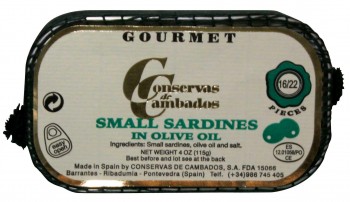 In terms of taste, price does not matter. There are plenty of good, cheap brands. Some brands are frankly disgusting. And unfortunately this is many people’s initiation into sardines that makes them vow to never eat another one. Free yourself of this mistaken belief! Here are my top picks guaranteed to convert you:
In terms of taste, price does not matter. There are plenty of good, cheap brands. Some brands are frankly disgusting. And unfortunately this is many people’s initiation into sardines that makes them vow to never eat another one. Free yourself of this mistaken belief! Here are my top picks guaranteed to convert you:
Conservas De Cambados – These are my absolute favorite!! Sardines are already small, but these are small sardines (think less mercury). Good luck buying them. The store is in Spanish. They are sold on Amazon, but brace yourself for the price.
Cole’s Sardines – Cole’s is an earth-friendly company dedicated to selling the finest, foods from around the globe. Love their products.
Vital Choice – Amazing sustainable fish shop – without the fish market stank.
Angelo Parodi – They are carried at most Italian markets or delis.
Sardine Pageant
Not all sardines are created equal. For my tastes, Sardines from Spain and Portugual are the best. They have more of a tuna taste than most with a firm quality. I would say that sardine quality can pretty much be determined by country of origin with the following ranking:
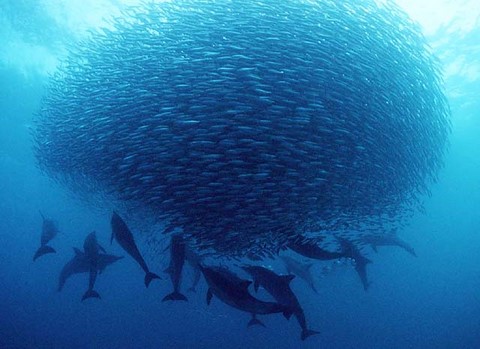 Italy
Italy- Portugal
- Spain
- Morocco
- Norway
- France
- Scotland
- Canada
- Poland
- USA
- The Philippines
- Thailand
- Mexico
If you’re one of those people that are convinced you don’t like sardines, I beg you to give them another chance with a better brand. I bet you a million micrograms of mercury that you’ll be pleasantly surprised with the brands I’ve recommended in this article. Give them another shot.
Click Here for References+
References
1. Monterrey Bay Aquarium Seafood Watch. Super Green List.
http://www.seafoodwatch.org/cr/cr_seafoodwatch/sfw_health.aspx
2. Wood, Rebecca. The Whole Foods Encyclopedia. New York, NY. Prentice-Hall Press; 1988.
3. Sardines. World’s Healthiest Foods. http://www.whfoods.com/genpage.php?tname=foodspice&dbid=147





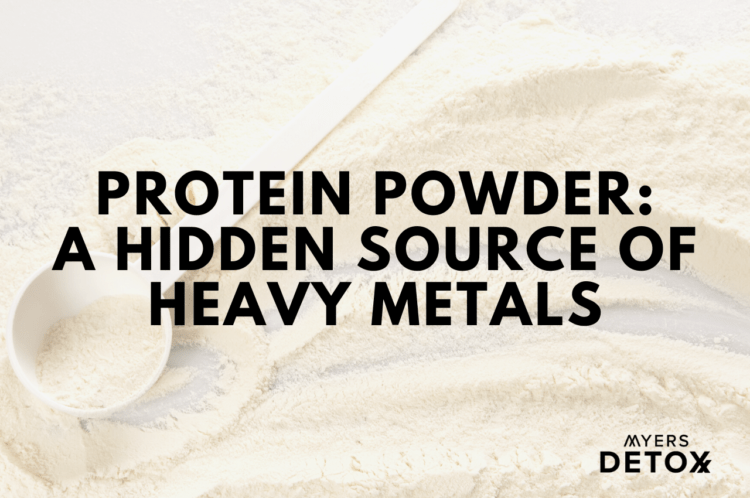
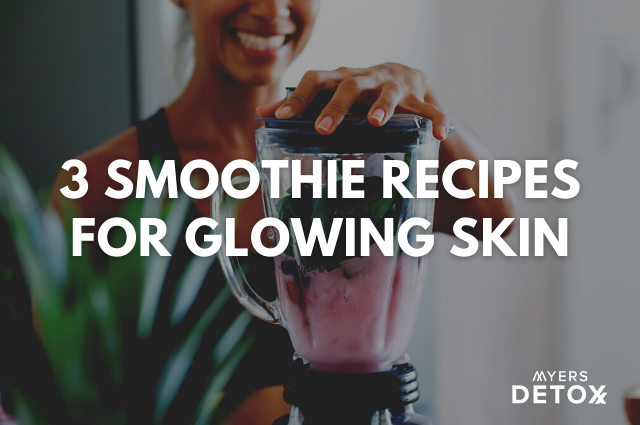
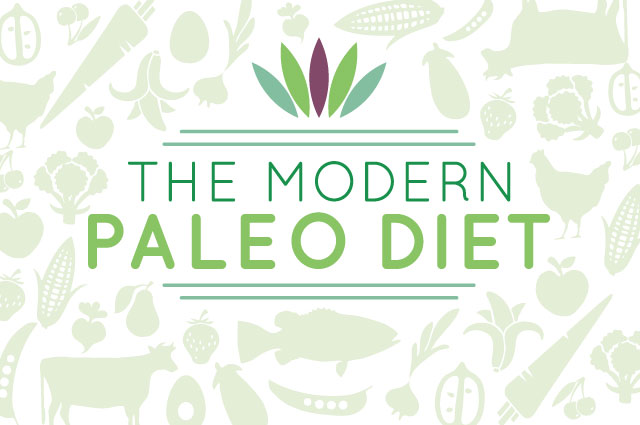

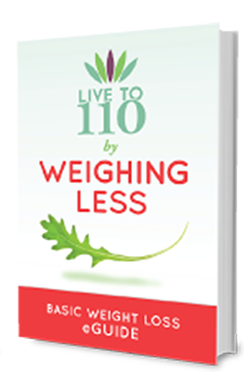
Oh wow! I did not realize it contained this terrible ingredient!! I will take it off the list immediately. I don’t usually eat that brand, but the company generally has a good reputation. I recommended it because it is a brand that is widely available.
Only the olive oil packed contain the liquid smoke. The ones with water or marinara sauce do not. They are a good brand. Just read the ingredients before buying any brand.
Great article, found this looking up Sardines as I noticed they were pretty cheap but remembered my previous experience of ewww fishyness. Fortunately reading from England, UK my supermarket carries Portuguese sardines as store brand, also none of this liquid smoke malarkey. My absolute favourite is wood smoked Mackerel, so awesome. Tend to eat several 100g portions a week on top of any other fish (as snack), wondered if Mackerel is considered a big fish or if big is like Tuna?
Mackerel is considered a small fish. However, King Mackerel is a large fish and should be limited in consumption.
Thanks for such a great summary! Trying to introduce sardines. The canned ones cause a pretty significant histamine response for me though. Found some online that are frozen. Hoping these are better tolerated. http://www.wholey.com/sardines.html
Frozen are good. I like fresh ones, too. Anything canned or animal protein sitting around too long or in a can, can promote histamine.
HI Jen!
The only thing that I eat from a can are sardines. So,I don’t really worry about that small exposure to the BPA. There really is no way around it. I have seen one brand of sardines in ceramic, but I forget the brand. sorry! You can detox BPA in an infrared sauna and since I do them regularly I don’t worry about these small exposures.
My sardines combo is like this:
out of the can into a pasta/veggie strainer – over the sink
add a hard boild egg, and/or fresh avocado – freshly chopped parsley or cilantro
add spices of your choice – pepper/paprika/tumeric
Squeeze plenty of lemon juice on it, break it up with a fork
You could add some mayo and/or mustard
On a toast sounds good, or put some fresh lettuce in a bowl, throw the Combo on top,
bon appetit!
Sounds good!
I’m going to try this
Why Do you recommend Wild Planet when it contains Aqueous Natural Smoke ( which is ‘liquid’ smoke flavoring developed by food chemists in any number of strengths that is added to the can in lieu of actually smoking the fish)?
Atlantic sardines are not rated as a good Seafood Watch choice because they have been overfished. Only Pacific sardines are considered good choices for the health of the oceans.
Do you or anyone else know if the BPA in the cans is a source of concern? My sister has been ranting about not buying any canned goods because of the BPA in the lining but I’ve seen research saying that the levels are way too low to be of concern, even if having more than 1 can a week.
I would like to start feeding sardines to my family (including 2 young children). We don’t eat any canned foods presently, and I am nervous about adding BPA or BPS from cans to our clean diet. Are you concerned about this? I am looking for frozen ones, but they are a ton of work to prepare!
I’m curious about your thoughts on sardines packed in cans with BPA in the liner.
Nope! The safest fish on the planet are the Tilapia I raise for my family, in a closed recirculating aquaponics system. I grow most of their food, which is mostly green plant material, much of which is high in omega 3 fatty acid from my own property.
Good for you… how is that helpful to anyone else? You’re just being a braggart.
Costco carries a brand called Wild Planet “cleaned and scale-free… lightly smoked” (from “aqueous natural smoke”) that they sell as 6 non-BPA cans to a box, packed in extra virgin olive oil, caught in the northern Pacific and packaged in Vietnam. Cost is $10 per box. I think they’re very tasty and eat about 3-4 times a week. Wondering if you’re familiar with this brand?
YES, Wild planet is a very good brand. Eat up!
I buy Wild Planet sardines from Costco too, eat like 5 or 6 cans a week.
Hello there i am interested to try Skinless & Boneless Sardines in Water. Which brand would recommend as most of them are in olive oil. Thanks Jas
My 8 year daughter eats seasons brand sardines every Morning with avacado. Is this dangerous and is she ingesting too much. Please advise
I don’t think i’d eat sardines daily. a few times a week at most. Like any food, you don’t want to overdo it. This is a general rule to get a large nutrient profile and avoid developing food sensitivities.
.” Dark-meat fish Inorganic forms of arsenic were 7.4% higher in people eating dark-meat fish (tuna, mackerel, salmon, sardines, bluefish, and swordfish) once a week, compared to people who ate them less than once a month. Organic arsenic exists naturally in seawater, and while organic arsenic is believed to be relatively safe, this research suggests it might not be as harmless as scientists think. Since all seafood tends to be high in arsenic, Dr. Cottingham says, make it an occasional meal.” What do you think about this wendy
Here’s the thing. ALL food has metals in it, including many vegetables and meat. Sadly, our planet is very polluted. Yes, most fish contains metals, but you can still eat it once a week. I don’t think it’s about avoiding a food because it contains a metal. It’s about avoiding foods we know are VERY high in metals – like tuna, swordfish, shellfish, etc. And eating coriander seed oil or cilantro tincture or chlorella while eating fish to grab the metals before they deposit in the body.
Sardines are also great for weight loss. Simply put a sardine in your mouth, wait a second, vomit, repeat as necessary! Viola!
Hahah. Very well said!! lolol. That’s exactly why I wrote this article – to find sardines that don’t make you want to vomit. There are a lot of disgusting sardines out there, but the ones I recommend in the article are quite tasty!!
What about arsenic? Joe Rogan spoke to Rhonda Patrick the other day about high levels of arsenic in his blood work due to Sardines…. http://jrefan.com/the-joe-rogan-experience-episode-901-with-dr-rhonda-patrick/
MY issue with that is his assuming the arsenic is from sardines. I find that most clients I test have arsenic. You cannot know for certain where you got a toxin, only guess. And you’d have to test the sardines he was eating. There are sardines from all over the world. Note, ALL food has toxins in it. It’s extremely hard to avoid. You just want to avoid the most obvious sources of toxins. But not to worry. You can detox it!